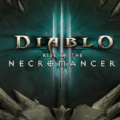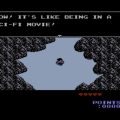The best games not on the SNES Classic
This was a post I had planned to do around the launch of the SNES Mini that I just plain didn’t get to. But with the recent 25th anniversary of the Super Nintendo, I thought there was no better time than now to make up for it.
The Super NES Classic Edition landed with 21 games and, unlike the NES Classic, nearly all of them were good rather than historically relevant (I’m looking at YOU, Balloon Fight. And Ice Climber. And Mario Bros. And… —)
So this list is a knock on what we got (assuming we actually got it). But rather a look at what could have been.

ActRaiser
While the action-game segments are a bit stiff by today’s standards, the true joy from Actraiser stems from how it splits time between side-scrolling action, and a top-down city builder that took the term “God-game” quite literally.
The two halves of the game were deeply intertwined. The action stages blazed the trail to new areas to develop. Building civilization, in turn, granted your avatar better stats and new powers as devotion to you grows among the people and ancient artifacts are recovered.
The only real complaint I could have for Actraiser is that it’s too short. While it has a reasonable amount of content for its vintage, the game leaves you wanting much more. And Actraiser 2 gave us some more action levels, and nothing else, so the itch remained unscratched. Surely this was a hot target for an indie game spiritual successor?
Including this game may have been the longest of long shots; Despite being merged with Square, whose games are represented on Nintendo’s mini-consoles, not a single Enix game has appeared. And it sticks out like a sore thumb that not even the Japanese lineups scored a single game Dragon Quest series. If Enix’s most beloved games are not a priority for Square-Enix, what hope did an even more obscure from their Quintet studio have?
As such, I won’t be listing other Quintet games, though by rights I ought to.

Chrono Trigger
And speaking of Enix… We can only hope the Squaresoft half is enough to save this game.
If I haven’t sung Chrono Trigger‘s praises enough yet, something must seriously be wrong with me.
While my heart forever belongs to Final Fantasy VI, I totally get why a lot of people crown Chrono Trigger as king of the 16-bit RPGs (and sometimes King overall).
The “Dream Team” of Final Fantasy and Dragon Quest developers (notably including Akira Toriyama from the DQ side) made for a very tumultuous and ultimately doomed marriage. But while it lasted, they created a fully realised world, inventive mechanics and storytelling, a top-tier combat system and all sorts of extra flourishes that hadn’t been seen before. Chrono Trigger set a standard that many RPGs after it failed to reach, and a lot of the 32-bit era crowd that was chasing Final Fantasy VII may have turned out better by trying to chase Chrono Trigger instead.
I’m sure Chrono Trigger missed the cut due to two of the 21 games already being RPGs, but it certainly would have been nice to have an affordable means of legally playing damn near every SNES RPG classic in their original forms.

Donkey Kong Country 2
I get why Donkey Kong Country was included on the SNES mini. It belongs in the gaming encyclopedia as a prime example of both reviving a legacy character and launching a successful new franchise. Rare’s workaround to get CG-like graphics onto the Super Nintendo made DKC the visual spectacle of the year, and it had a soundtrack to match. It was all enough to make people not notice or not care how middling a platformer the game was.
But things were different with the sequel. Rare couldn’t rely on their breakthrough graphics technique to do the heavy lifting. So thank goodness Diddy’s Kong Quest was the best game of the series.
DKC 2 cleaned up the platforming, made smarter use of the animal companions, added some more collectables without turning it into the nightmarish collectathon the third game became, maintained the high quality graphics and music, and provided an well-done difficulty curve with impressively creative and fair challenges later in the game.

Mega Man X2/X3
This one is a toss-up given that there’s not an objective answer as to which was better; my personal preference falls on X3, but I’m also the guy who likes the wrong Iron Man sequel. So pick X2 with confidence if that’s the one you fancy.
Like DKC before it, there are very good reasons why the first game of the series was chosen for the SNES Classic’s lineup. Unlike DKC there is a plurality who believe the first game was the best of its series on the Super Nintendo.
The NES Mega Man games were infamous for seemingly falling into a rut (I say seemingly because most of us played and replayed them anyway; A bad Mega Man game was still miles better than a good chunk of the NES library). Given that the first X game is so loudly heralded as the best on the SNES, you might feel inclined to write off the other two as merely iterative.
But consider this: Mega Man X was, naturally, an early title for the SNES that landed with a bang. It was reprinted several times, and it was hard for most of the SNES’s audience to NOT find it (for cheap even), let alone not play it. Whereas X2 and X3 used expensive custom cartridges with print runs so short you’d be forgiven for thinking they were RPGs.
…but you will not be forgiven for thinking they were mere retreads of X. The X series on the original Playstation was known for finding ways to twist the formula around every game, and that got started on the SNES. Each game used the SNES’s power to bring completely new ideas for stage designs and movement to the table. They start you in a place of familiarity, only to layer on new trick after new tweak until your approach late-game is entirely different from the other games in the series.





